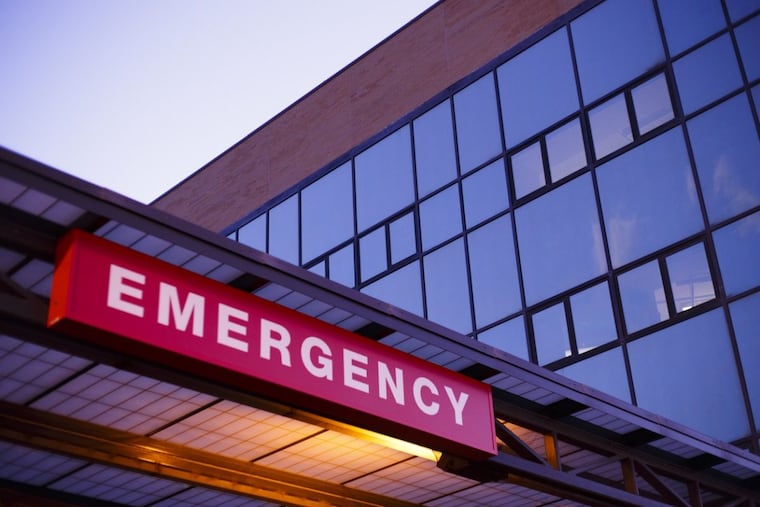Why the emergency room is always crowded and what we can do about it | Opinion
Health systems, politicians and researchers have blamed emergency room overcrowding on the decline of primary care, “inappropriate” use of the ED, a fragmented health system, and more recently, social determinants of health.

For decades ever more patients have been arriving at emergency departments (EDs). As concern has mounted, and emergency department crowding – most evident in wait times – has increased, fingers have been pointed. Health systems, politicians and researchers have blamed the decline of primary care, “inappropriate” use of the ED, a fragmented health system, and more recently, social determinants of health.
The solutions offered follow from these diagnoses. Improve primary care access, encourage patients and their doctors to use more primary care, penalize patients who are deemed retrospectively by simple algorithms to have used the ED inappropriately, improve care coordination, and improve social determinants of health by actions like paying for housing or transportation.
In a recent New York Times article, “A Doctor’s Diary: the Overnight Shift in the ER,” a physician describes the tragic cases, frantic pace of work, and long delays of the ED. The article rings true to us: two economists, one an emergency physician and one a fairly frequent user of the ED.
However, the solutions enumerated in the article are unlikely to solve ED overcrowding overall. In an economic framework, they all address only one of the problems – the demand for ED visits.
But the core problem is the supply of resources the system makes available to treat that demand, and the nature of ED care. Suppose that methods were found to make these changes happen and average demand for ED care fell, then hospitals would surely be advised to reduce staffing in the short run, and space in the long run, to avoid having periods of expensive downtime and underused resources. After such rescaling, patients would face the same delays as before and, if anything, the patient mix might be more sad and severe.
Emergency medicine has proven itself to be a remarkably efficient clinical specialty. As a practicing ED physician, when a critical patient comes in, has a breathing tube put in, is started on powerful medications to increase blood pressure, is given multiple IV antibiotics, has dozens of life-threatening diseases considered and ruled out, and then is hopefully sent out to a waiting ICU bed, the doctor has at most a minute to take a deep breath, clear his mind, and then see the next patient.
By allowing periods of emergency room backup, the staffing pattern assures a continuous supply of cases to be treated, with no wasted resources — even if patient convenience, anxiety, and comfort suffer. This efficiency comes at a potential price: higher mortality for patients when the ED is particularly crowded, a narrow focus on the type of problems solved in the ED (we won’t fix your chronic hypertension, for instance), and high burnout rates in the specialty.
If hospitals carefully balanced supply of nurses, physicians, hospital beds, and ED beds to just meet the demand on average, there will inevitably be periods where for several hours or days demand outstrips supply and patients build up in the waiting room and in ED beds waiting for their hospital bed to be available. The obvious solution, not mentioned in the Times article, is to pay the cost of more hospital capacity.
But who will do so? Most hospitals are not-for-profit, but they cannot be for-losses. Hospitals lose money on the uninsured and possibly other patients who visit their EDs and make money on the privately insured. This cross-subsidization is a source through which hospitals fund the ED’s key role in disaster preparedness and providing care to the uninsured. Private insurers are understandably more reluctant to fund these public benefits with private funds, but the public Medicare and Medicaid programs have obviously not been eager to spend more either — or even make ED wait time a quality metric with financial consequences.
A solution, then, is to fund EDs to add more capacity than at present even if it is more frequently excess. Not an easy solution for today’s insurers, or even under some Medicare for All scenarios, but necessary if the problem of overcrowding is to be solved.
Another solution is to address a different cause of ED overcrowding, the lack of inpatient beds to take patients out of the ED and to their ultimate destination. It would use pay-for-performance; essentially an insurer would pay less money for any admission where the insured waited more than two hours between the time the decision to admit was made and the patient was moved to their inpatient bed. This would force hospitals to redistribute resources from the whole hospital to the ED rather than taking a narrow perspective that the ED “loses money.”
Either way, the question is whether we are willing as insurance purchasers and taxpayers to pay more for more resources. In health care, as in everything else, we can’t get something for nothing.
Ari Friedman, MD, PhD is a practicing emergency physician at the University of Pennsylvania and an economist focusing on the unscheduled care system. Mark Pauly, PhD is Bendheim Professor in the department of health care management, professor of health-care management, and professor of business economics and public policy at the Wharton School, and professor of economics in the School of Arts and Sciences at the University of Pennsylvania. He is also a member of the Inquirer’s Health Advisory Panel.